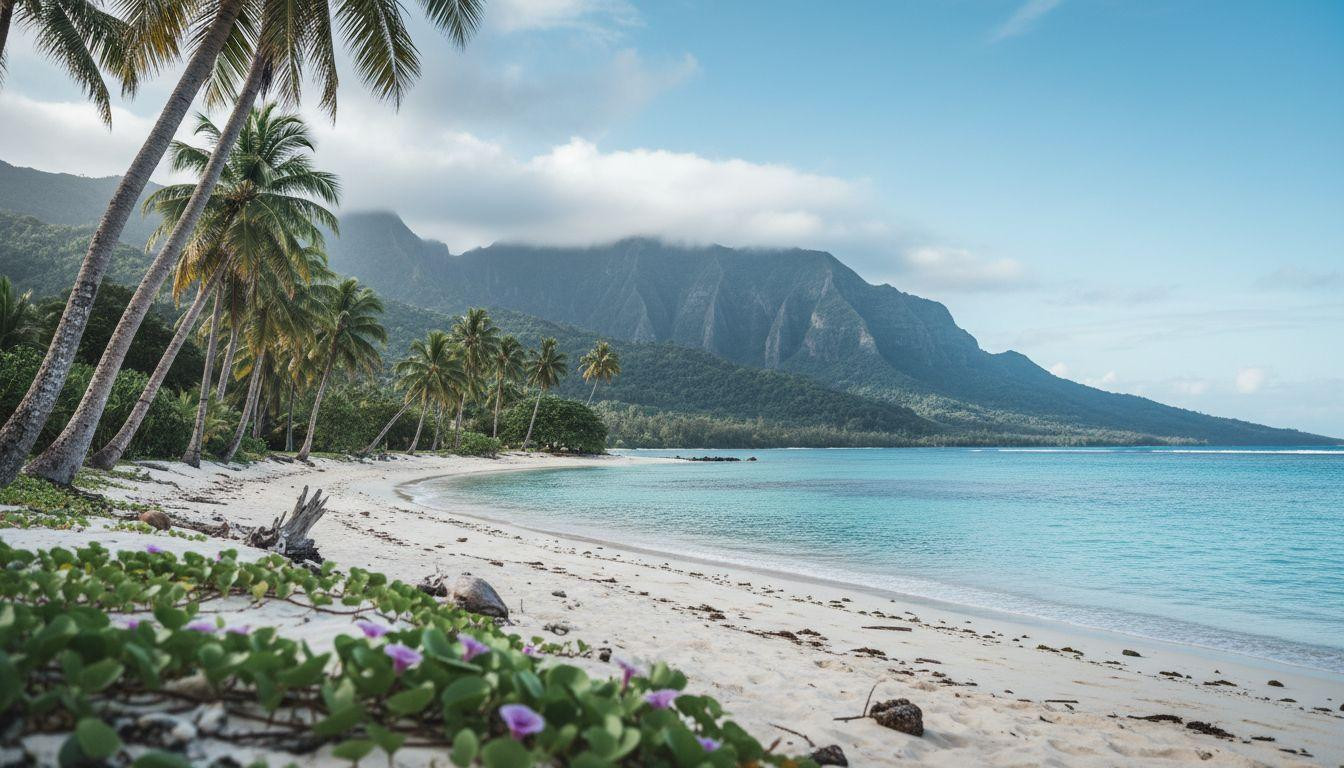Overwater bungalows in Bora Bora cost what most Americans earn in a month. French Polynesia’s turquoise lagoons demand $800 per night before meals or activities. Yet 2,400 miles southwest, Rarotonga delivers identical volcanic peaks rising from impossible blue water for 60% less. The Cook Islands’ main island operates under legislation no resort developer can override: no building taller than a coconut tree. While Bora Bora charges premium rates for manufactured paradise, Rarotonga’s beachfront stays start at $90. Same crystal water, same dramatic geography, radically different price tag.
Why French Polynesia breaks most travel budgets
Bora Bora’s overwater bungalows photograph like dreams and cost like nightmares. Average accommodations run $600-1,200 per night before dining or excursions. Round-trip flights from Los Angeles average $2,500-3,500 per person, requiring 8+ hour journeys through Papeete connections.
A week-long honeymoon easily exceeds $12,000-15,000 before cocktails. French Polynesia’s tourism economy operates on luxury positioning exclusively.
The resort monopoly tax
Restaurants charge $40-80 per entree in Bora Bora. Lagoon excursions cost $150-300 per person for basic snorkeling. Even grocery staples run 50-100% above mainland France prices due to shipping logistics.
Resort developments cluster lagoon access, limiting authentic beach experiences to hotel guests paying premium rates. You’re purchasing manufactured paradise, not discovering authentic Pacific culture.
Rarotonga delivers identical beauty at 60% savings
Rarotonga’s lagoons mirror Bora Bora’s signature turquoise shade perfectly. That impossible blue appears digitally enhanced until witnessed firsthand. The 20-mile island circles a collapsed volcanic core, creating identical dramatic geography of peaks rising from protected water.
Yet accommodations range $80-300 NZD ($48-180 USD) nightly. Mid-range beachfront options cost half of Bora Bora’s basic rates.
The building height law that changes everything
Cook Islands legislation mandates no structure taller than coconut trees. This isn’t suggestion but enforced law. The policy prevents high-rise hotels, maintaining intimate village scale throughout the island.
Resort compounds cannot block coastlines here. Victorian inns, family properties, and locally-owned accommodations dominate the 18,000-resident nation. Small islands worldwide prove authentic experiences cost less than manufactured luxury.
Real price comparison November 2025
Flights cost $1,200-2,000 LAX to Rarotonga versus $2,500-3,500+ to Bora Bora. Accommodation averages $90-180 nightly versus $600-1,200. Seafood entrees range $18-30 USD versus $40-80 USD in French Polynesia.
Activities like lagoon cruises cost $36-60 versus $150-300 in Bora Bora. Total week for two people: $4,500-6,000 versus $10,000-15,000. The 60% savings aren’t marketing claims but documented pricing differences.
What you actually experience in Rarotonga
Muri Beach delivers postcard perfection: crystalline turquoise water so calm it mirrors sky. Perfect for beginner snorkeling without currents or crowds. Black Rock Beach transforms at sunset when volcanic formations silhouette against orange-pink skies.
Papua Waterfall drops into jungle pools accessible via moderate hiking. Nature encounters without guided tour premiums or resort restrictions.
Authentic culture versus resort theater
Saturday morning at Punanga Nui Market reveals the crucial difference. Locals shop alongside visitors for fresh tuna, tropical fruits, and coconut dishes at $5-10 NZD each. Live music plays while vendors sell genuine Cook Islands crafts.
Sunday church services sung in Cook Islands Māori offer spiritual and acoustic beauty visitors witness freely. Remote islands worldwide preserve authentic cultural experiences better than resort destinations.
Transportation freedom versus resort shuttles
Circle Island Bus circumnavigates the entire island in 50 minutes for 5 NZD ($3 USD) one-way. Scooter rentals provide complete autonomy to explore beaches, viewpoints, and villages independently.
No mandatory excursion packages or resort shuttle schedules. The single coastal road connects everything, creating exploration freedom impossible in sprawling resort complexes.
Planning your authentic Pacific alternative
Air New Zealand operates primary service from Los Angeles requiring 12-16 hours with Auckland or Honolulu connections. May through October delivers dry season perfection: mid-70s°F temperatures, low humidity, zero cyclone risk.
November through April brings warmer 80s°F temperatures and occasional rain but significantly lower tourism volumes. Tropical lagoons worldwide offer optimal experiences during shoulder seasons.
Budget accommodations cost $80-120 NZD nightly in family-run properties. Mid-range beachfront apartments and small resorts range $150-300 NZD. Luxury villas exceed $400 NZD but remain half of Bora Bora pricing.
Book accommodations directly with properties for best rates. The Maire Nui Botanical Gardens, Cross-Island Trek, and numerous beaches charge zero entrance fees. Protected coves worldwide prove natural beauty doesn’t require premium pricing.
Your questions about Rarotonga answered
How does Rarotonga compare to other Pacific islands?
Rarotonga offers more consistent tourist infrastructure than Samoa without sacrificing authenticity. Unlike Fiji’s backpacker scene or resort dominance, Rarotonga maintains boutique-scale accommodations. The building height restriction creates visual differences from Caribbean destinations experiencing vertical development.
What makes Cook Islands culture unique?
Cook Islands maintains self-governing status with New Zealand, allowing unique policies protecting island character. English and Cook Islands Māori serve as official languages. The 18,000 total population across 15 islands creates genuine cultural encounters impossible in resort-dominated economies.
When is the best time to visit Rarotonga?
May through October provides reliably pleasant conditions with dry weather, breezy trade winds, and minimal cyclone risk. November through April brings higher temperatures and humidity but offers shoulder season pricing 15-20% below peak rates.
Morning light touches Muri Beach glass-smooth lagoon while roosters crow across empty stretches of white sand. Volcanic peaks rise through tropical mist as fishing boats return with dawn catches. This is Pacific paradise without premium pricing, where coconut tree height limits preserve island character forever.
